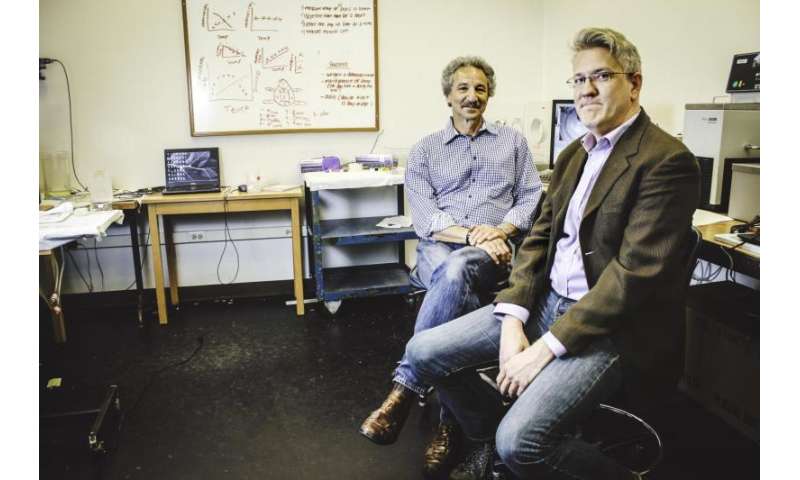NIH awards Indiana University $900,000 to study link between body temperature and autism

A $900,000 grant to Indiana University from the National Institutes of Health's Eunice Kennedy Shriver National Institute for Child Health and Human Development will fund one of the first basic science investigations into potential connections between fever and the relief of some symptoms of autism.
The study, led by Jeffrey Alberts, professor, and Christopher Harshaw, assistant research scientist, in the IU Bloomington College of Arts and Sciences' Department of Psychological and Brain Sciences, addresses a growing number of anecdotal reports from parents in which the onset of fever appears to temporarily relieve some of the social symptoms of autism in their children.
These fever-related behavior changes include reported improvements in sociability, mood and communication.
"Like many research topics, the phenomenon isn't totally unknown, but exact mechanisms linking body temperature and autism haven't yet been organized as a principle and unpacked to see how it could work," said Alberts.
The IU study will be conducted in mice. Alberts and Harshaw will investigate the association between physiological deficits in the ability to regulate body temperature and social behaviors associated with autism using mouse models for both conditions.
An expert in species behavior, Alberts has extensively studied the way in which rodents and other mammals huddle together to share and conserve heat. The activity is a unique example of social behavior evolving in tandem with metabolic processes, as the more heat an animal produces, the more attractive it becomes to potential partners under cool conditions.
The ability to produce heat in response to cold also depends on an individual's functional brown adipose tissue, "brown fat," which is dependent upon the hormone oxytocin.
Oxytocin, sometimes referred to as the "bonding hormone," also has been credited with a number of important social and physiological functions, enhancing social bonding and attachments, as well as playing a role in the body's weight and fluid regulation.
The new research will build upon earlier experiments by Alberts and Harshaw comparing huddling behavior in mice with and without oxytocin.
In that study, the IU scientists found mice without oxytocin appeared unable to respond normally to cold and retain heat, a condition with ripple effects across their own and other animals' behavior. The mice without oxytocin received fewer contacts from other mice and had less access to more "attractive," that is, heat-generating, partners.
The mice without oxytocin also seemed "strangely unmotivated to seek out the warmth of other mice," Harshaw said. "These mice, which have not gotten into the habit of joining with others, are very different creatures socially."
The NIH-funded study will examine two types of mice: those with genetic mutations that lead to autism-like social dysfunction and those whose ability to generate heat and regulate body temperature has been impaired.
In the mice with autism-like symptoms, the IU scientists will examine the ability to maintain proper body temperature. In the mice with poor heat regulation, they will trace social development from infancy to adulthood.
"We're predicting these two types of mice are going to intersect; that the inability to produce heat is going to affect individuals' social behavior, as well as affect their interactions with their mother and alter the dynamics of the group," Alberts said. "By the same token, in those with impaired social behavior, we expect to find problems maintaining body temperature."
Both types of mice will also be compared to control groups with normal social and heat-regulating abilities.
Based on the reports from parents about fever and autism, the IU scientists said the new study could hold "great promise" for applications in humans.
They may even uncover the vestiges of a common evolutionary connection between humans and other primates and mammals, for whom the ability to stay warm and form strong social connections was a matter of survival, Harshaw said.
"There's an abundance of 'thermal metaphors' to describe a person's sociability scattered throughout languages across the globe," added Alberts, who once wrote on the topic with the late Gyula Décsy, an IU scholar who specialized in linguistic evolution.
"Phrases such as 'warm smile' and 'cold stare' remind us that human language often embodies biological mechanisms, and may even guide us to new scientific insights," he said.
Provided by Indiana University